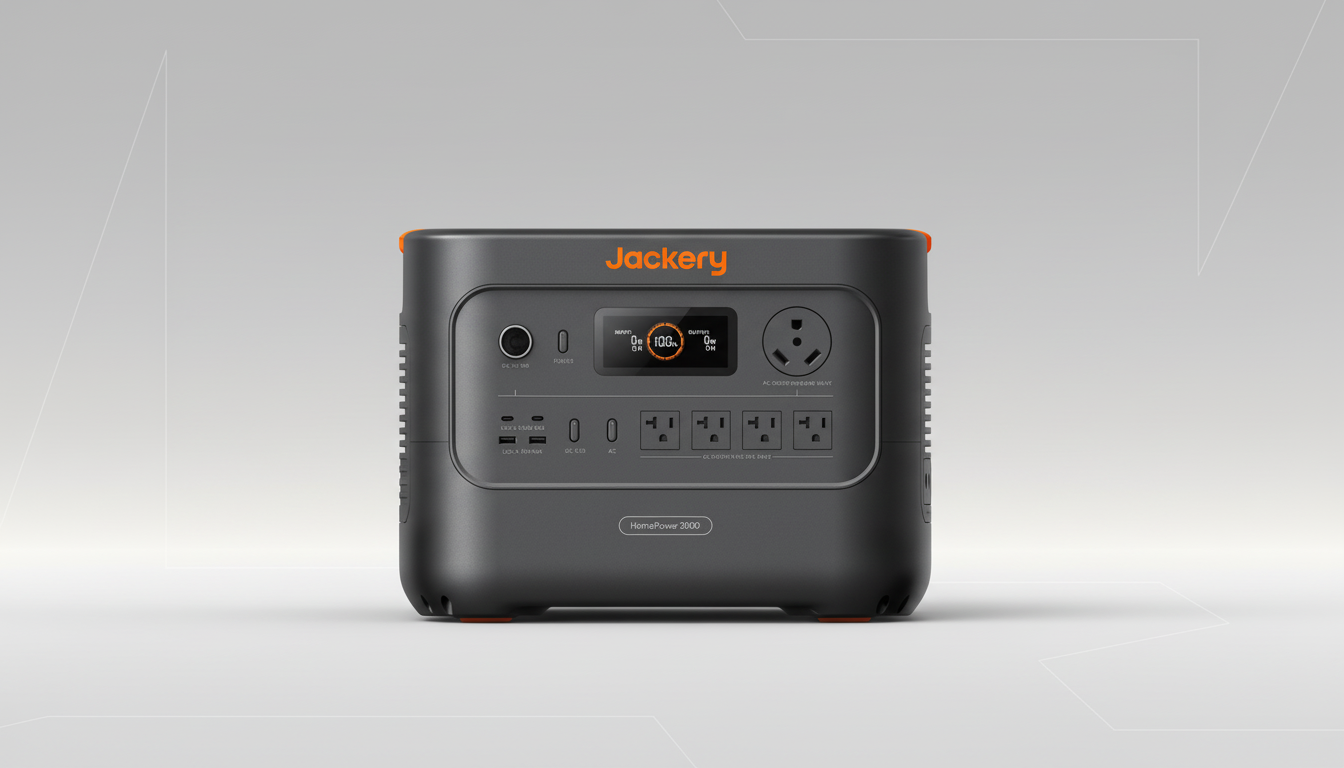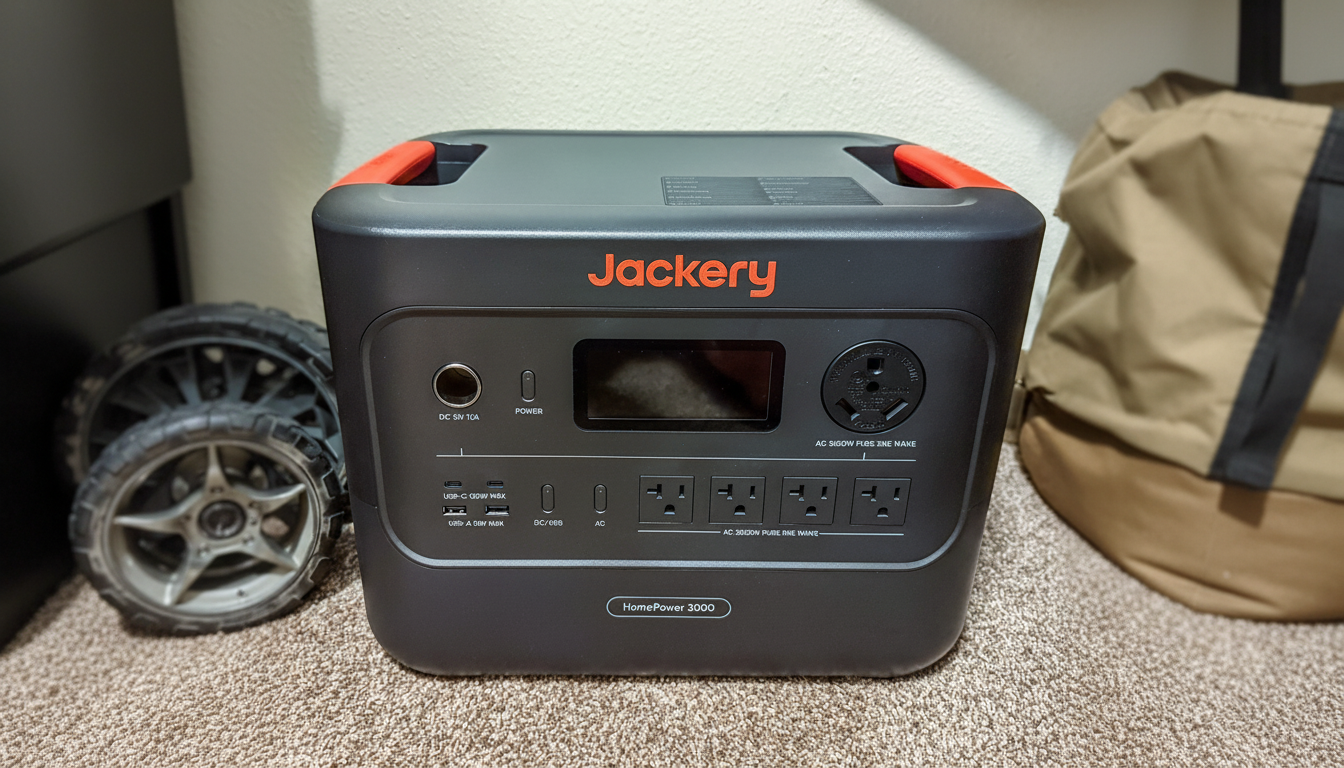The Jackery HomePower 3000, which is now $1,199, is a 52% reduction, or $1,300 off list price. This is an outstanding value if you’re contemplating whole-home backup or need a high-capacity portable option for storms, RVs, or work sites, as it is significantly cheaper than broad battery pricing. According to cost tracking website Camelcamelcamel, it is also the model’s cheapest historical cost. With 3,072Wh, a 3,600W output, and a 7,200W surge, the HomePower 3000 is regarded as “home backup capable” rather than “the small weekend-camping unit.” Essentially, during a night outage, it will keep your fridge, lights, WiFi, and devices charging. In most places, it will continue operating for quite a while after.
Why This Deal Stands Out for High-Capacity Power Stations
High-capacity power stations are usually obtained for between $0.60 and $1.00 per watt-hour. At 3,072Wh for $1,199, the HomePower 3000 averages $0.39/Wh. This is a competitive price for this range. To be fair, unless bundled with promotions, comparable large units from major competition usually cost around $0.70/Wh or higher.

The raw specs also hold up well for mixed household loads. It’s rated for 3,600W continuous output, meaning you can plug multiple essentials in at once – a full-size fridge averages 100–200W but pulls more on startup; a running router; some LED lights; 1–2 laptops; a microwave run every hour; and so on – and the inverter won’t trip. Jackery claims a fridge can run for 1–2 days on this unit, and the math for that is solid: a continuously running “normal” fridge might draw 100–150W on average at current temperatures these days, so that should give 18–25 hours before accounting for inverter and battery losses.
Outage patterns make capacity matter. The U.S. Energy Information Administration shows Americans experience several hours of power interruptions per year, with severe weather causing multi-day outages in multimillions of people. A system this size is designed to bridge those longer gaps, especially for cold-storage concerns and internet, which was as important as ever during last year’s outages in Texas and Louisiana.
Food safety is another angle. USDA Food Safety and Inspection Service says perishables enter the danger zone after about 4 hours without refrigeration. To be clear, having a refrigerator running after an outage does save comfort, but it also often results in less expensive food loss and fewer health hazards.
Outside the home, 3kWh+ portable stations have become cornerstones of off-grid cabins, project vans, and tailgates, as noted by consumer testing organizations. High-capacity models, they say, can “comfortably run several sensitive electronics and a moderately sized tool or appliance” as long as they manage peak loads and avoid running multiple high-draw devices simultaneously.

Speedy top-ups broaden what you can do with a battery this large
Jackery rates the HomePower 3000 for a full recharge in about 1.7 hours using hybrid AC and DC input, or 2.2 hours via AC alone. With two SolarSaga 200W panels, expect to see up to 80% in roughly nine hours of strong sun, which is useful for extending off-grid runs or recovering after cloudy stretches. It also supports 12V car charging and gas generator inputs for flexibility.
The design is built for multi-environment use—home, garage, campsite, or job site—with a form factor that emphasizes mobility and simple setup. As with any high-capacity station, keep the unit on a level surface with adequate ventilation and avoid enclosing it where heat can build up during higher-load operation.
How to Decide If It Fits Your Home or Mobile Setup
Start with a load plan. A refrigerator, a WiFi router, a few LED lights, phone and laptop charging, and a box fan collectively remain well within this unit’s continuous capacity. Avoid pairing it with multiple high-draw heaters or large power tools simultaneously, which can spike to thousands of watts. If considering home integration, talk to a licensed electrician about safe options such as a transfer switch or selected-circuit subpanel. Portable power stations avoid the fumes, noise, and maintenance of gas generators, and they can be topped up with solar for quieter, cleaner operation. The trade-off is that battery capacity is finite, so planning and efficient appliances pay dividends.
Bottom Line: Why This Price Drop Is Worth Considering
Jackery HomePower 3000 comes in at $1,199. It’s the pricing of a mid-range item with the performance of a larger battery alternative. Moreover, the HomePower 3000 is much easier to recharge, and you’ll be able to use the battery to back up your house. Finally, if you’ve been hanging around for a trustworthy, flexible power station without the standard high cost, that price reduction is a chance you ought to take.

